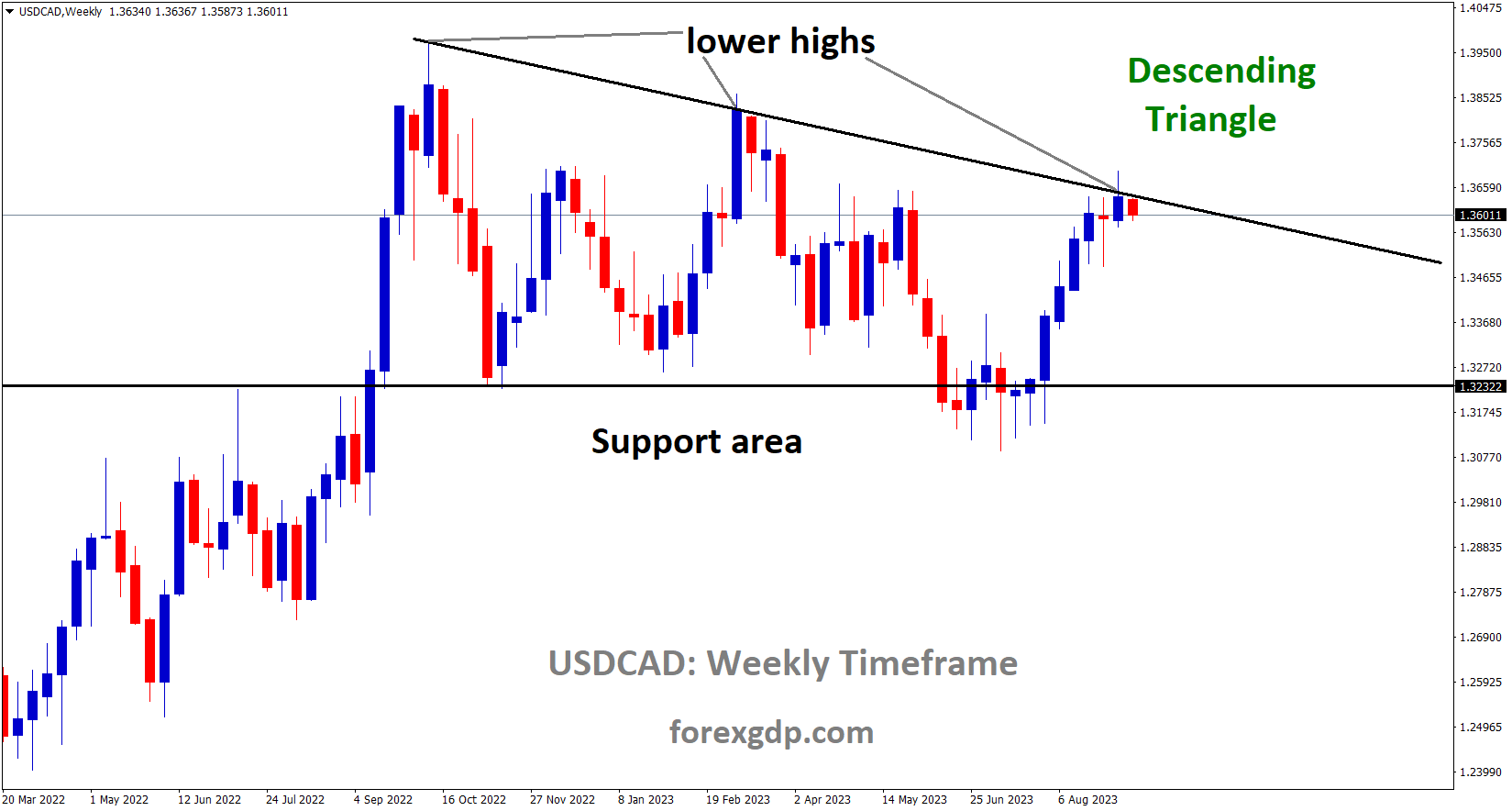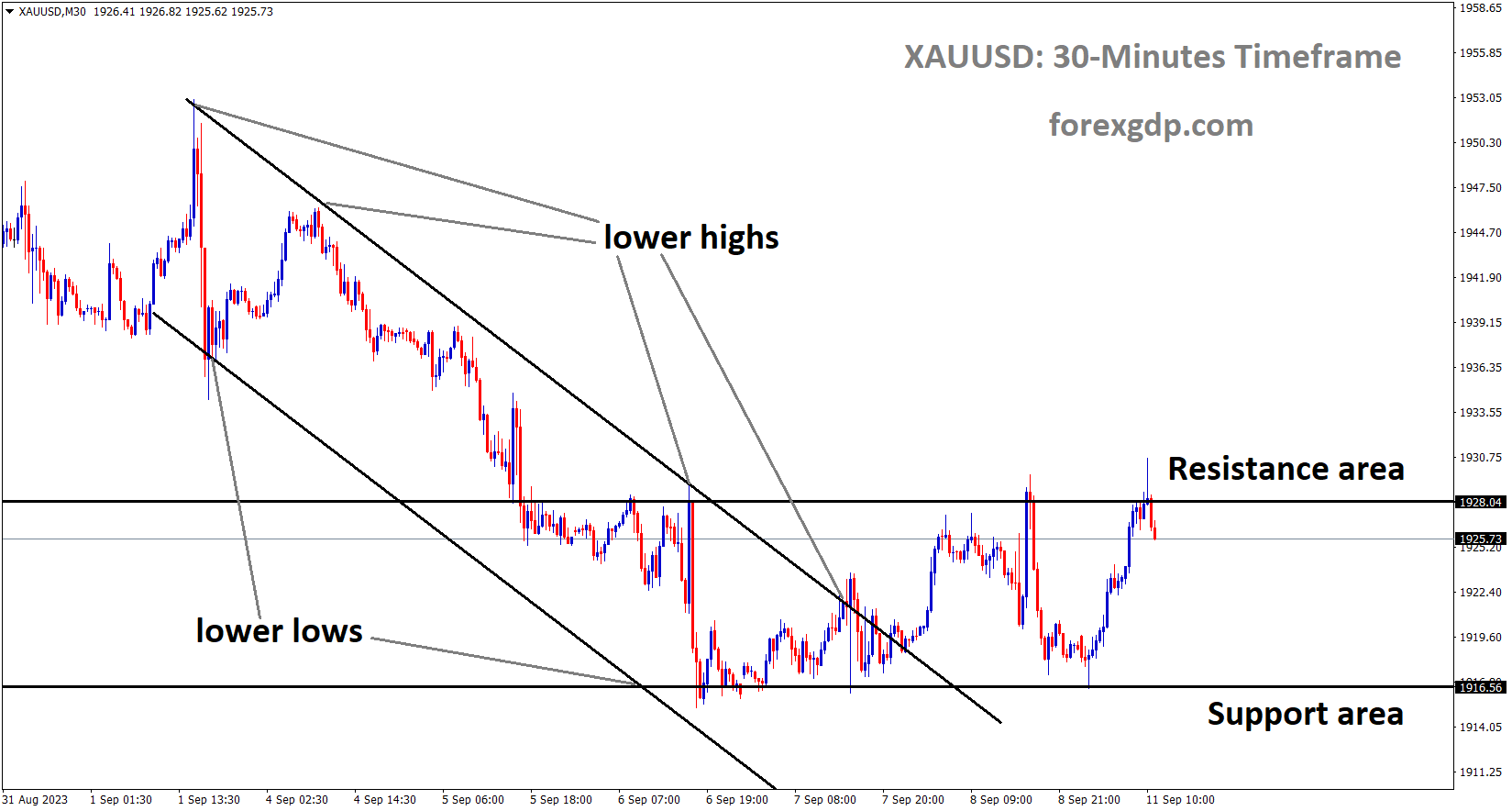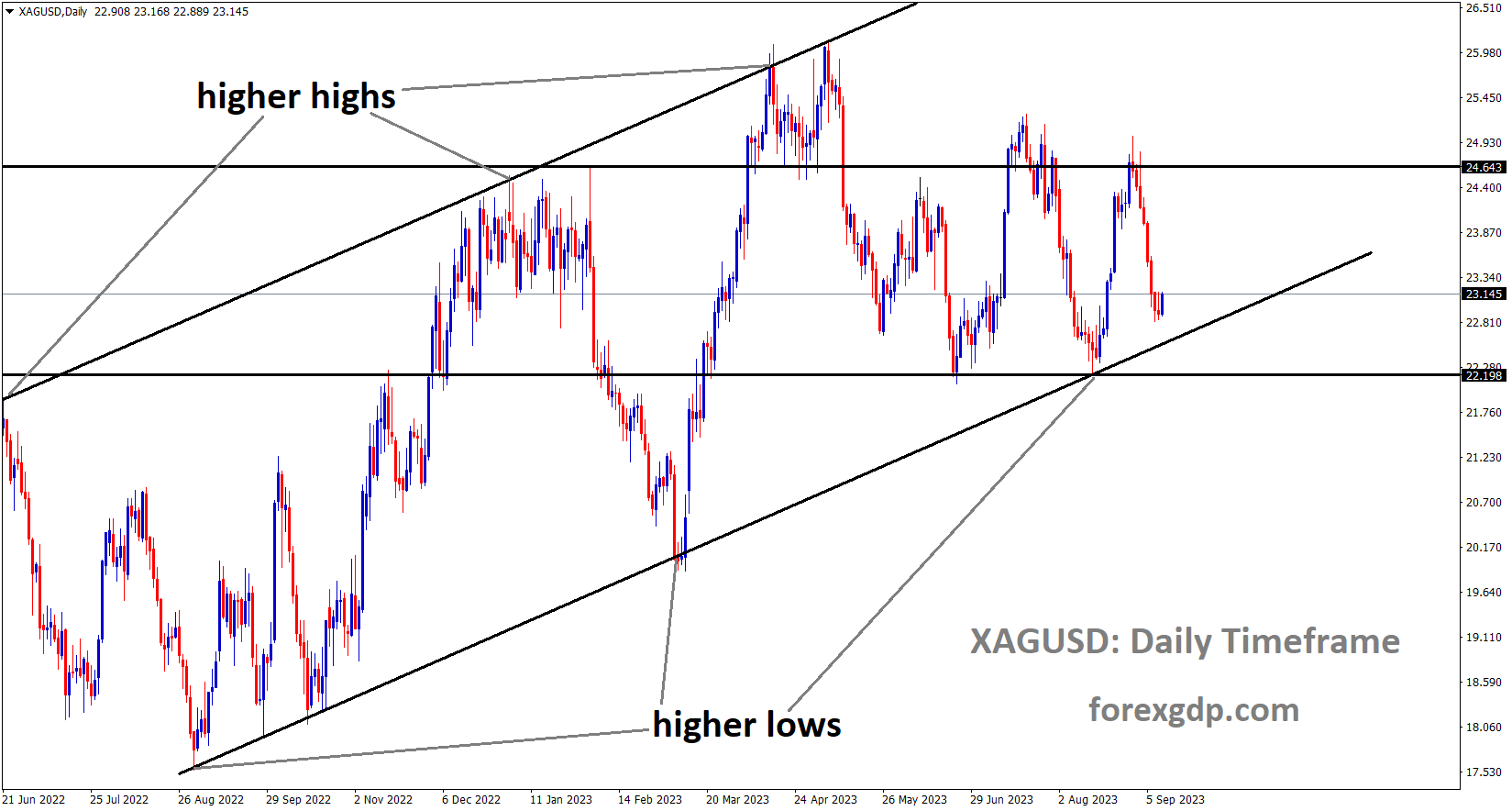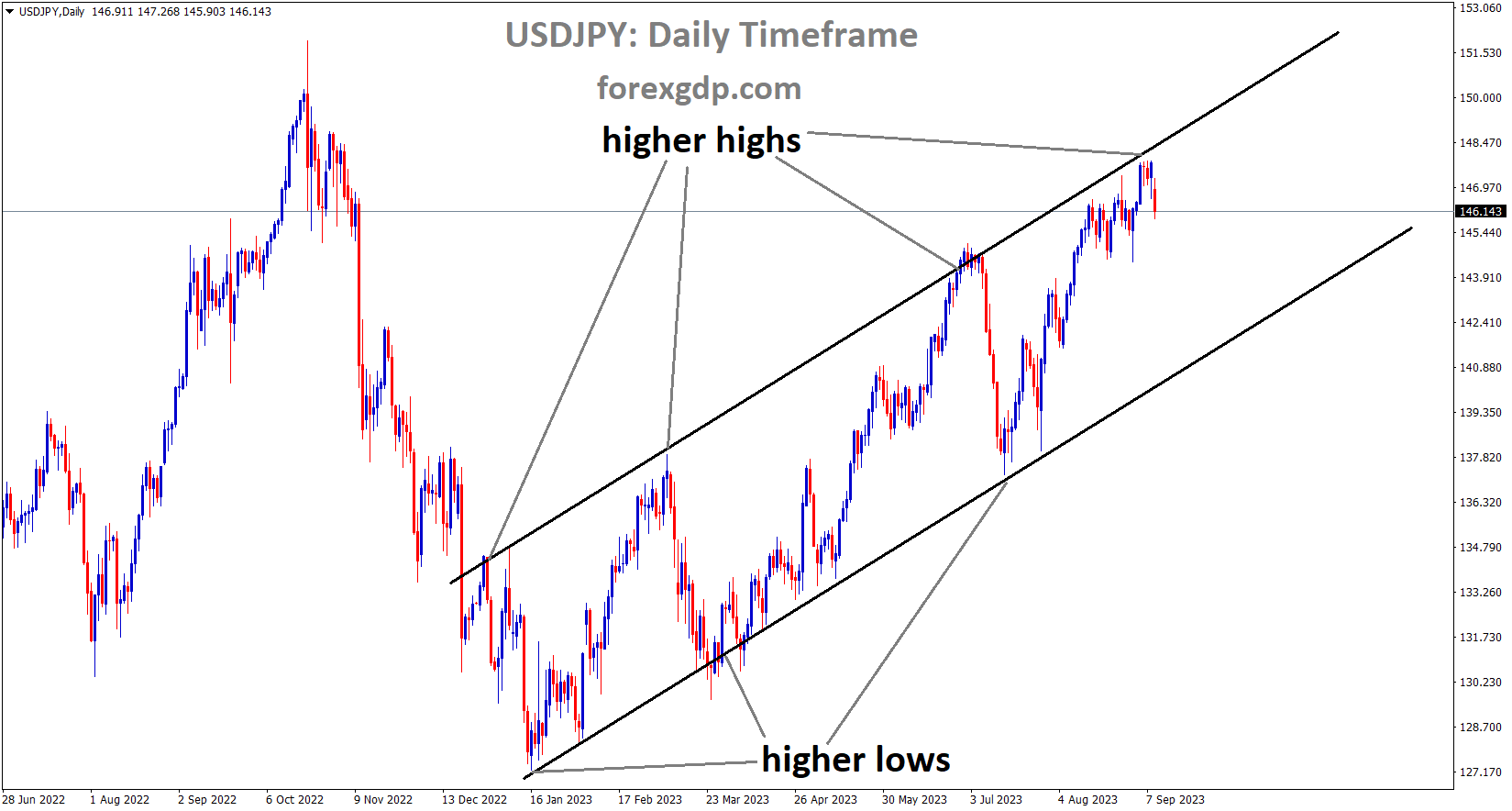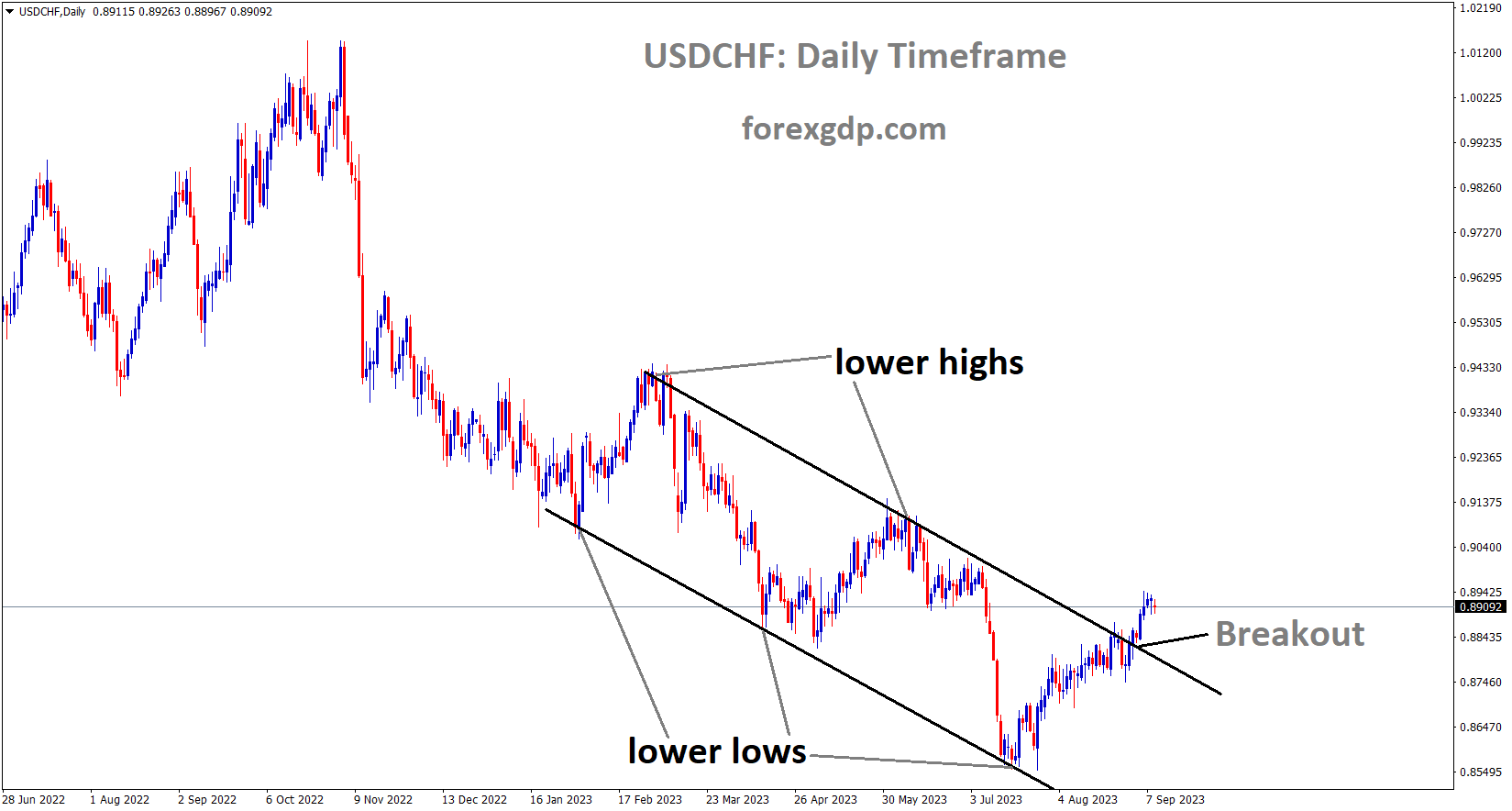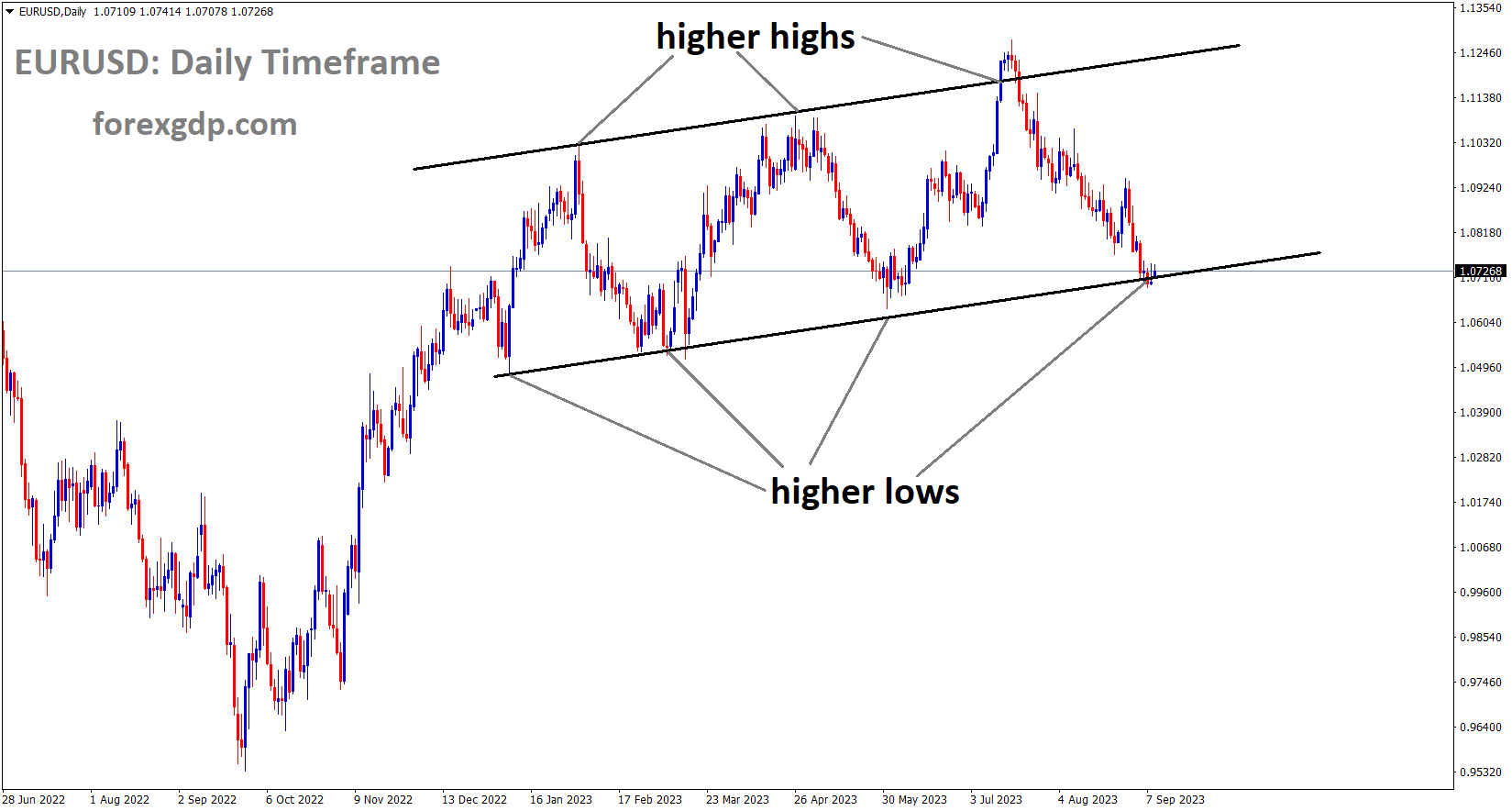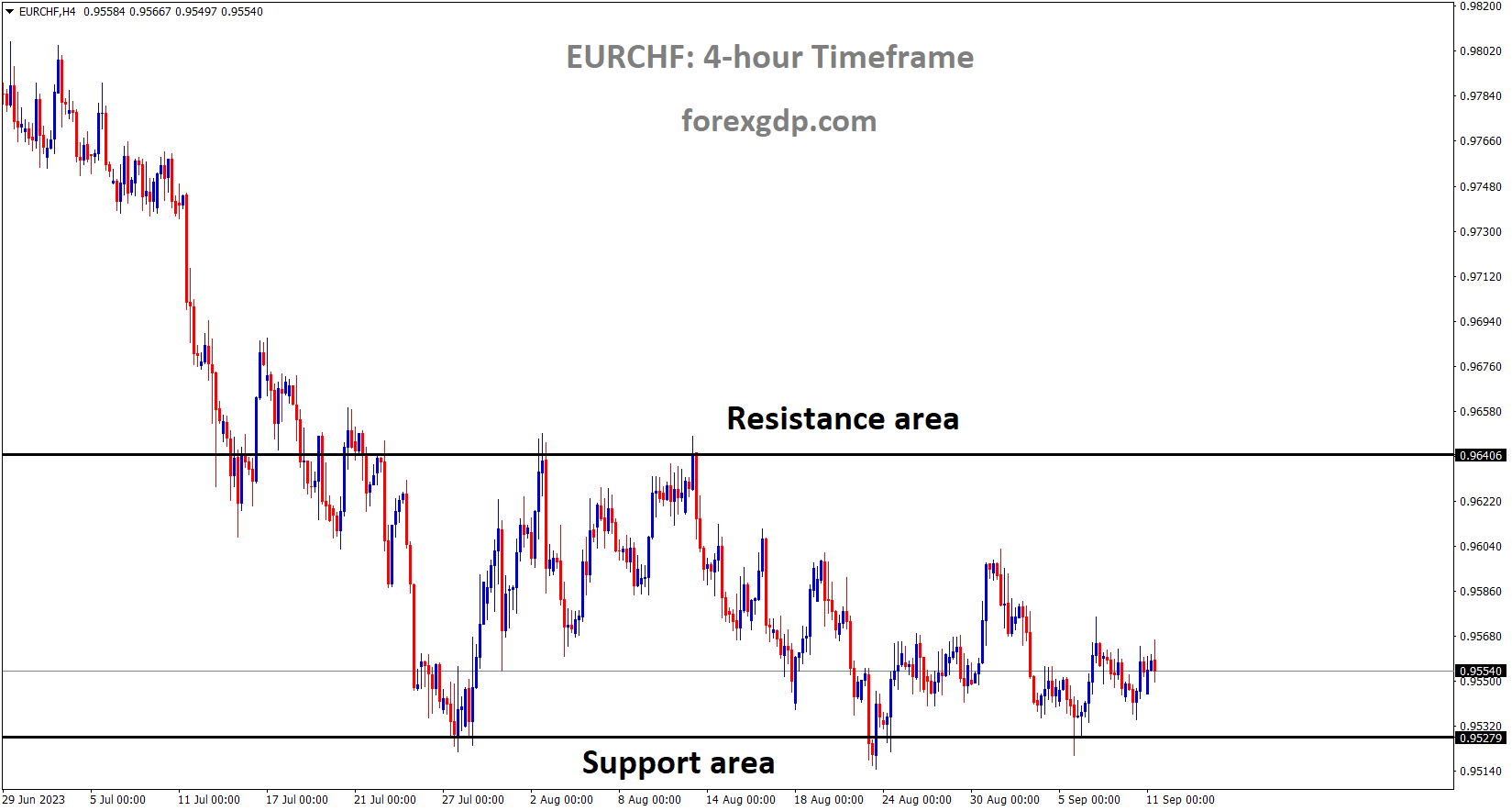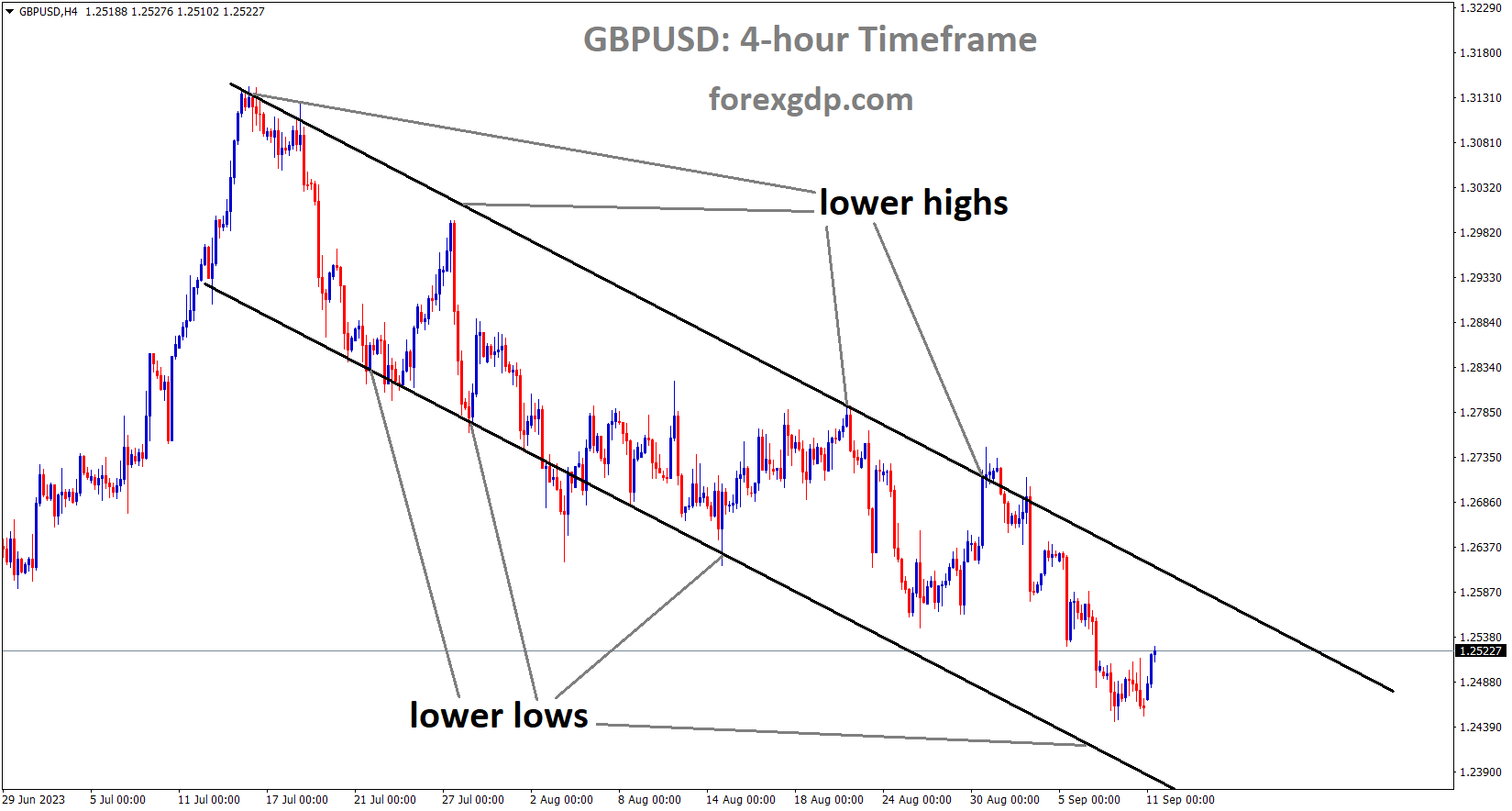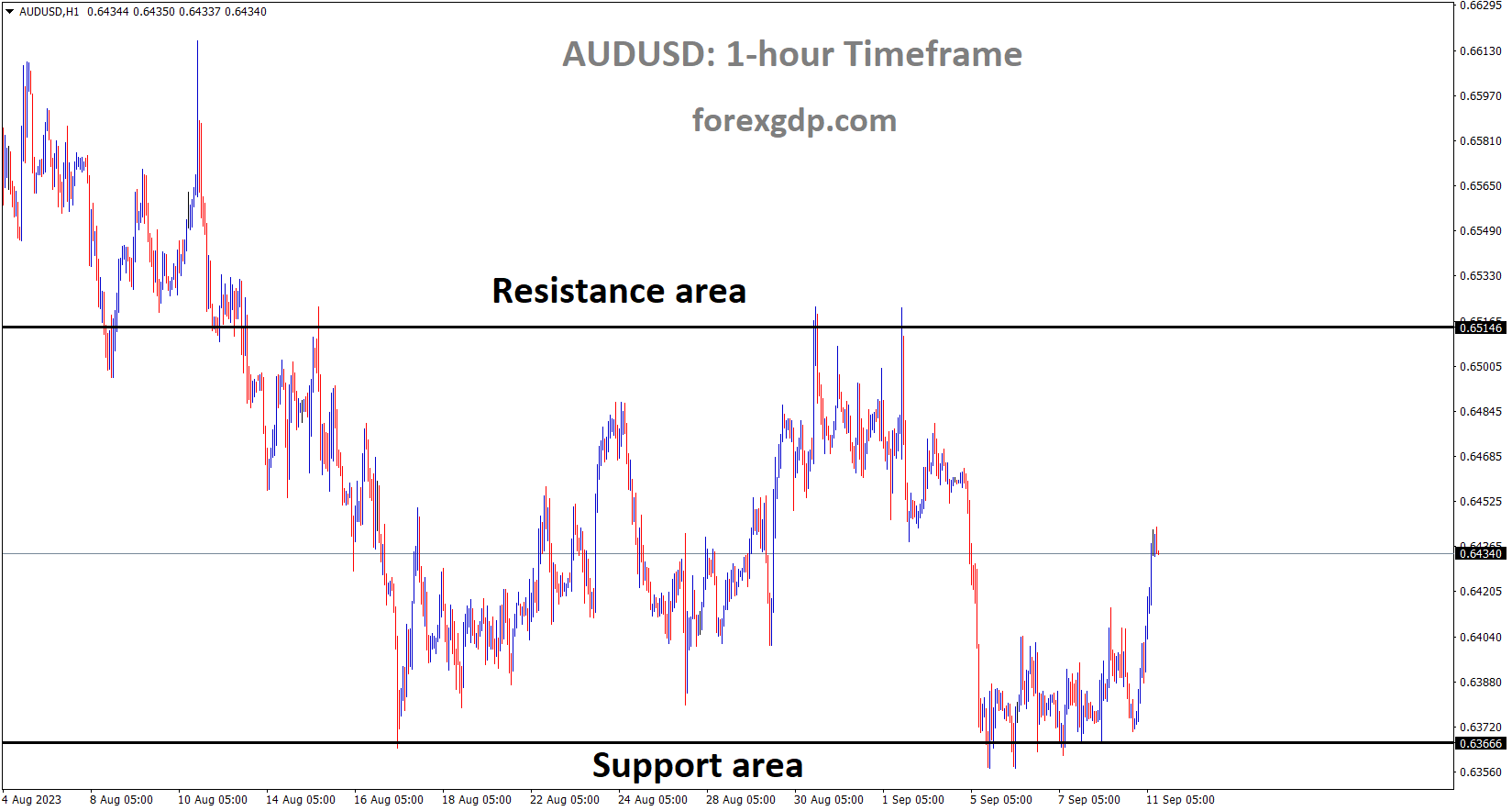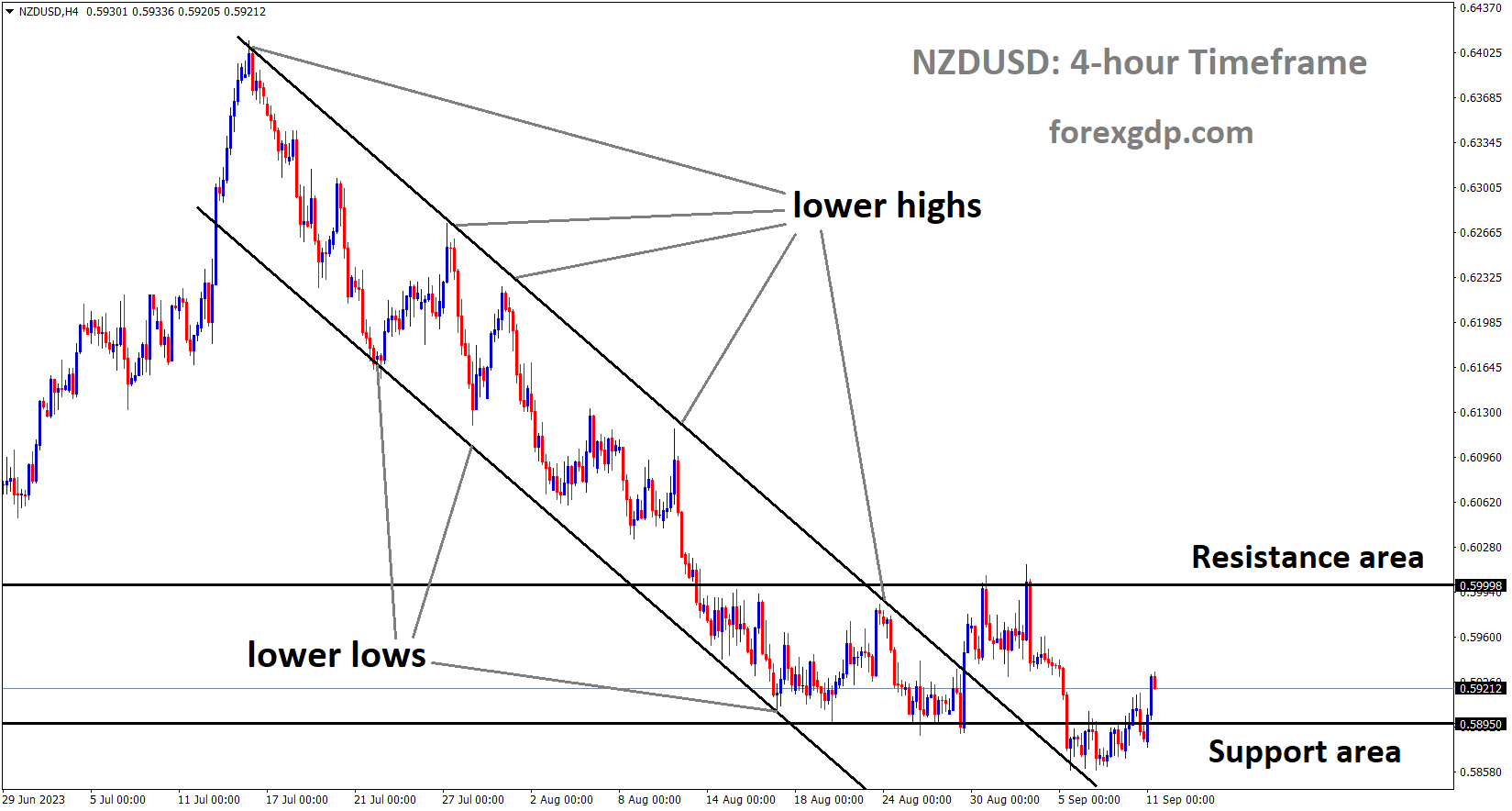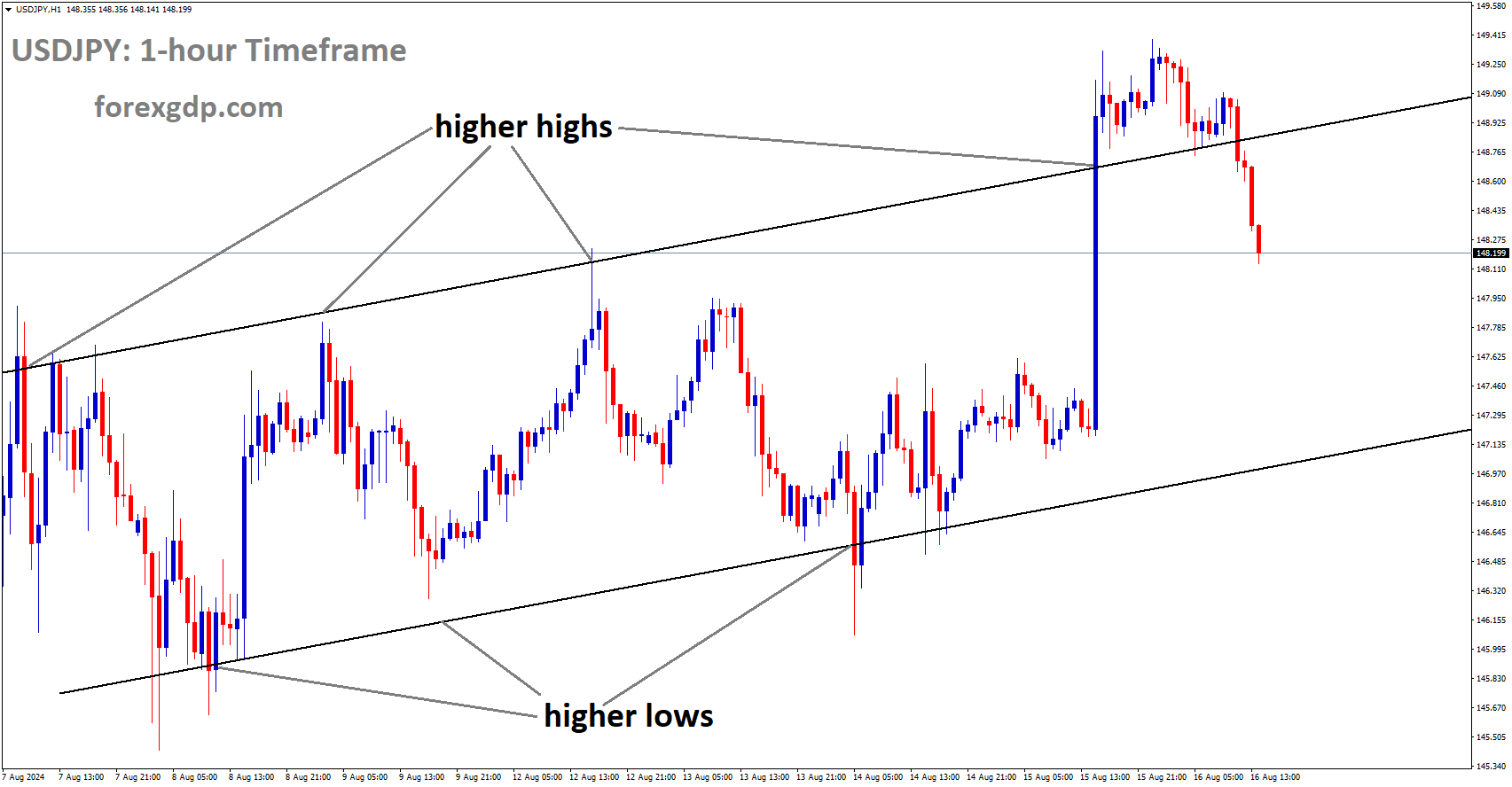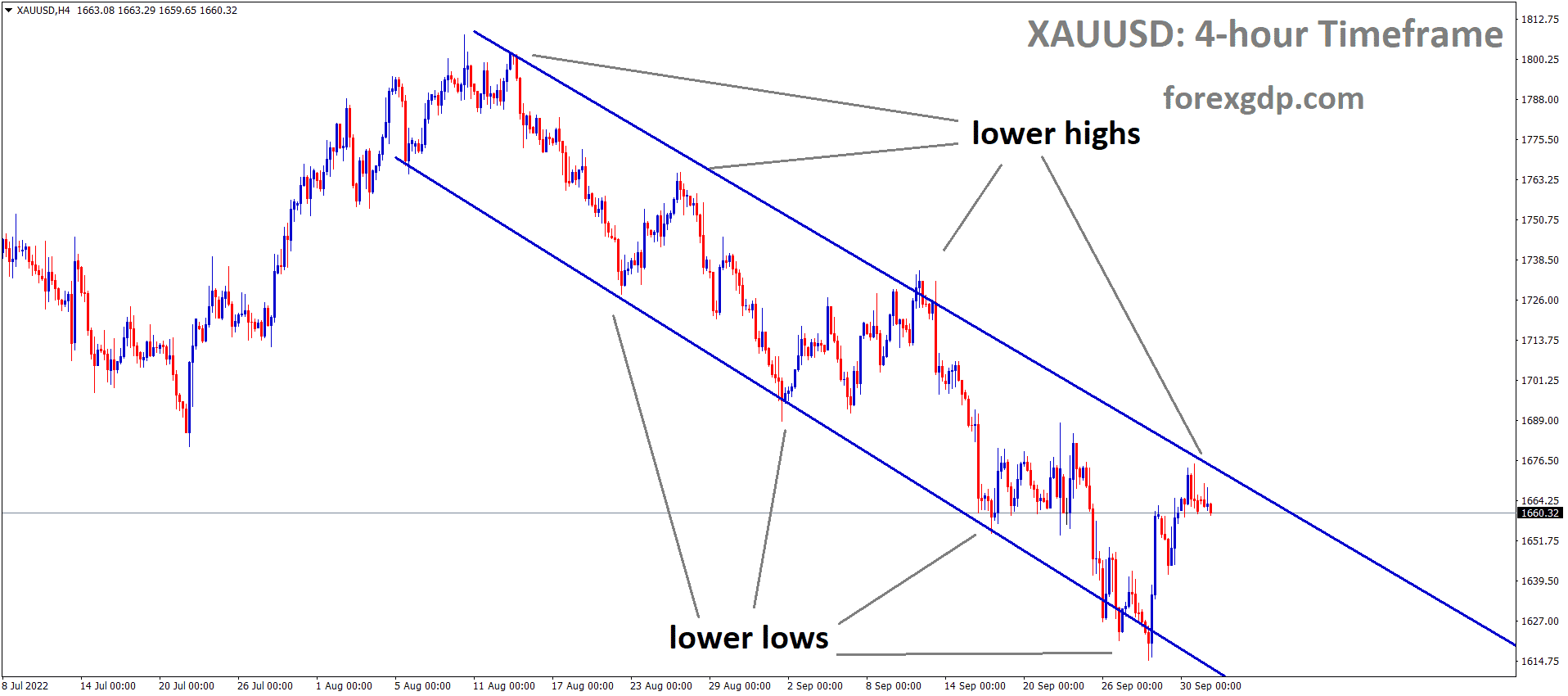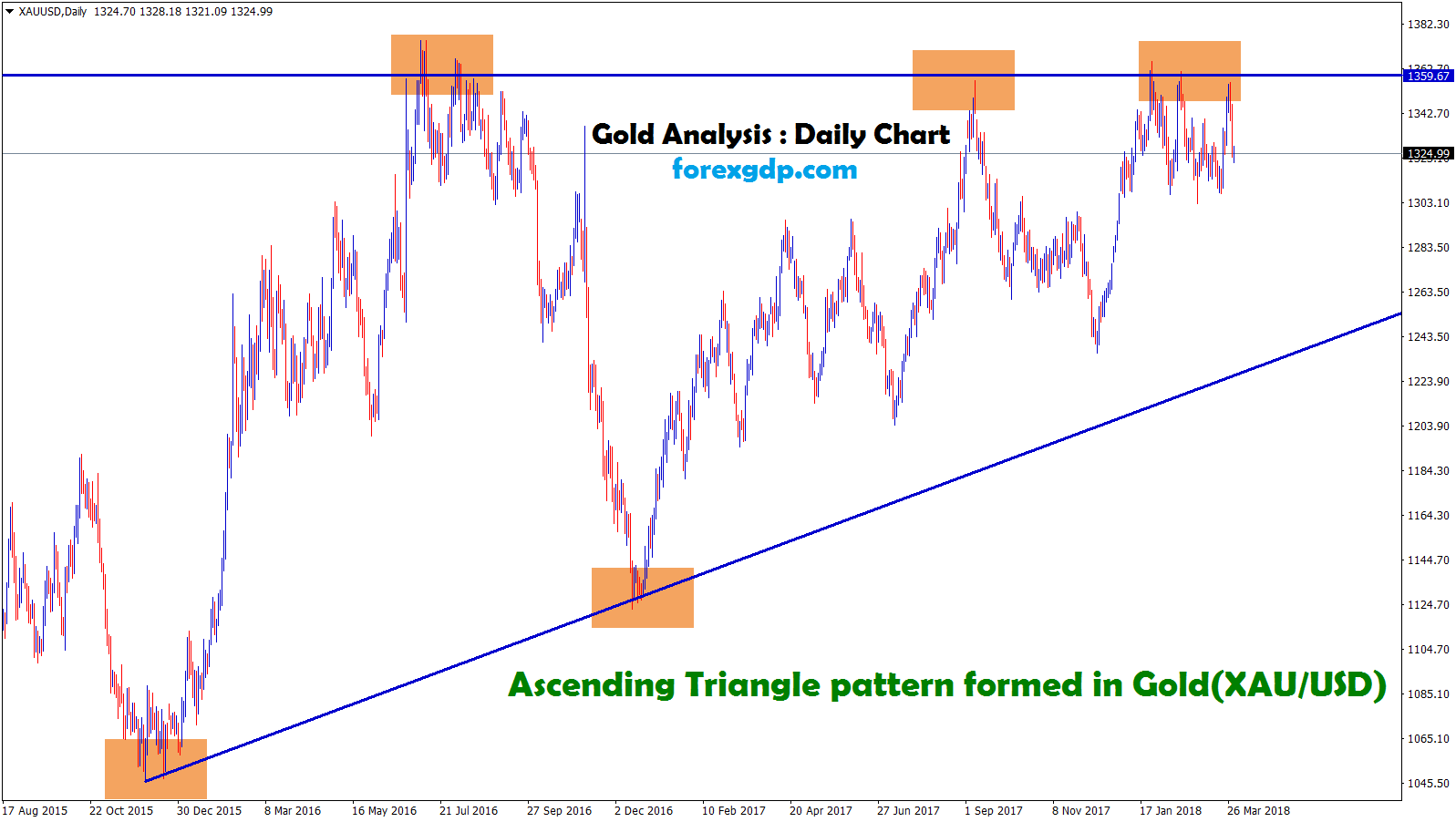USDCAD Analysis
USDCAD is moving in the Descending triangle pattern and the market has reached the lower high area of the pattern
The unemployment rate has increased to 5.5% from 5.0% in the previous reading, hourly wages have increased to 5.2% from 5.0%, and the change in employment was 39.9k versus 15.0k expected. The Canadian dollar rose against the US dollar after the news was published on Friday.
During the Asian session on Monday, USDCAD is hovering around 1.3630, attempting to recoup losses from the previous session. Despite Canada’s upbeat August employment data released on Friday, the pair was under pressure. As previously stated, Average Hourly Wages (YoY) increased to 5.2% from 5.0% previously. Net Change in Employment (Aug) was 39.9K, significantly higher than the market consensus of 15.0K, and a significant improvement over the previous -6.4K. While the unemployment rate remained stable at 5.5%, it was expected to be 5.6%. Strong wage growth, on the other hand, has the potential to boost consumer spending while maintaining persistent inflationary pressures. This situation could prompt the Bank of Canada (BoC) to consider raising interest rates again. The US Dollar Index (DXY), which measures the performance of the US dollar against six other major currencies, is currently trading around 104.80, which is slightly lower than its peak since April. However, US Treasury yields have risen, which may support the dollar. Ten-year US Treasury bond yields increased by 0.52% to 4.29%.
The US dollar (USD) is expected to hold its strength, aided by a steady stream of positive economic data reflecting the robust state of the US economy. For example, US Initial Jobless Claims were recently reported at 216K for the week ending September 2, falling short of market expectations of 234K and falling short of the previous week’s revised figure of 229K. This positive labour data contributes to the US dollar’s resilience. Furthermore, Chicago Fed Bank President Austan Goolsbee has stated that the central bank’s goal is to steer the economy onto a “golden path.” This path represents a scenario in which inflation falls without causing a recession, a delicate balance that central banks frequently strive to achieve in order to maintain economic stability and growth. Furthermore, investors are looking for more clues on the US Federal Reserve’s (Fed) decision to keep interest rates higher for an extended period of time. Furthermore, traders anticipate that the Fed will implement a 25 basis point (bps) interest rate hike by the end of 2023. The central bank’s hawkish stance could potentially contribute to the support underpinning the Greenback. Given the lack of significant economic data from Canada, investors are likely to focus on the August Consumer Price Index (CPI) for the United States (US), which is scheduled for release on Wednesday. This information is expected to provide useful insights into the inflation scenario and may influence investor decisions regarding the USDCAD pair, potentially prompting new trading positions.
XAUUSD Analysis
XAUUSD Gold price is moving in the Descending channel and the market has fallen from the resistance area of the minor Box pattern
Gold prices rose after China’s CPI data came in higher than expected. Gold prices will rise as China’s economy improves. China Holdings will reduce gold sales in order to stimulate the economy.
During the early trading hours of the Asian session on Monday, gold is trading around $1,920 per troy ounce. The precious metal is struggling to hold ground near the previous weekly close, gaining minor support as the US Dollar (USD) falls. The US Dollar Index (DXY), which measures the performance of the US dollar against six other major currencies, is currently trading around 104.80, which is slightly lower than its peak since April. However, US Treasury yields rose, putting pressure on the yellow metal’s price. Ten-year US Treasury bond yields increased by 0.52% to 4.29%. The dollar is expected to remain strong, buoyed by a steady stream of positive economic data about the state of the US economy. As previously stated, US Initial Jobless Claims were 216K for the week ending September 2, falling short of the market consensus of 234K and the previous week’s revised figure of 229K.
XAGUSD Analysis
XAGUSD Silver price is moving in an Ascending channel and the market has reached the higher low area of the channel
On Saturday, China’s Consumer Price Index (CPI) data for August were released. The report showed a 0.1% year-on-year increase, which was an improvement over the previous month’s figure of -0.3%. It did, however, fall short of market expectations of a 0.2% reading. This relatively soft CPI reading suggests that disinflationary pressures remain, which could put downward pressure on gold prices. Throughout the week, market participants will gain a better understanding of China’s economic situation, including the challenges that authorities must address in order to implement the necessary monetary and fiscal measures to meet Beijing’s target of 5% GDP growth this year.
Furthermore, the US Federal Reserve (Fed) is expected to keep interest rates high for an extended period of time. Furthermore, it is expected that the Fed will implement a 25 basis point (bps) interest rate hike by the end of 2023. The central bank’s hawkish stance could put significant downward pressure on gold prices. Furthermore, investors are looking for more clues from the August US Consumer Price Index (CPI), which is due on Wednesday.
USDJPY Analysis
USDJPY is moving in an Ascending channel and the market has fallen from the higher high area of the channel
Today, the Governor of the Bank of Japan speaks about monetary tightening; if wages and economic conditions improve, interest rates may rise in the market. In the last ten years, the -10% and YCC band +/- 0.50% maintained 0.70% returns in the 10-year JGB market.
The Japanese Yen has had a wild start to the week following comments from Bank of Japan Governor (BoJ) Kazuo Ueda that opened the door to speculation about the end of the Bank of Japan’s negative interest rate policy (NIRP). The USD/JPY fell from its 10-month high of 147.87 in early Asian trade on Monday morning. It fell to 146.67 before rising back above 147. Since then, it has fallen below 146.40. On the right side of this article, you can see current prices. According to the Yomiuri Shimbun newspaper, Ueda san may change monetary policy if wages and prices rise, citing various options. “We have a variety of options if economic and price conditions turn upward,” he said, emphasising that any policy adjustment will be contingent on circumstances.
However, the market may have gotten ahead of itself in expecting the BoJ to tighten. “There is still some way to go before the price target can be realised,” Ueda added. We will maintain our ongoing monetary easing policy.” The Bank of Japan (BoJ) maintains yield curve control (YCC) by targeting a band of +/- 0.50% around zero for Japanese Government Bonds (JGBs) out to ten years. The bank has become more accommodating in terms of YCC implementation, recently allowing the 10-year Japanese Government Bond (JGB) to yield more than 0.50%. It is currently trading at 0.70%, its highest return in nearly ten years. The spread between JGB and Treasury yields may be worth monitoring because it has historically had a strong correlation with the USD/JPY. This segment of the market may experience some volatility in the coming sessions.
USDCHF Analysis
USDCHF has broken the Descending channel in upside
Natural disasters are expected to increase in the next ten years, according to a Swiss RE Insurance company, so life reinsurance policies are expected to grow. This is primarily due to urbanisation and inflation.
The US ISM Service sector increased in August to 54.5 from 52.7, and analysts expect Q3 GDP to grow 5.6%. The US economy’s resilience prompted the FED to raise interest rates at its November meeting.
As part of a strategy to combat rampant inflation, the FOMC has raised borrowing costs 11 times since 2022, bringing its benchmark rate to a range of 5.25% to 5.50%, the highest in 22 years. Despite the Fed’s forceful actions, the current tightening cycle is likely not over, given the current macroeconomic conditions. Recent data show that, rather than slowing, the economy has accelerated this summer, contrary to historical experience during times of aggressive central bank monetary policy. For example, the ISM services sector PMI increased in August to 54.5 from 52.7 previously, exceeding all forecasts and reaching its highest reading since February. Given these encouraging signs, the Atlanta Fed’s GDP Nowcast predicts that output will grow at a 5.6% annualised rate in the third quarter.
The economy’s resilience, combined with tight labour markets, will keep household spending healthy for the time being, putting upward pressure on aggregate demand – a key driver of inflation. This could compel policymakers to tighten further this year, despite their pledge to “proceed carefully” in the future. Turning to the upcoming FOMC meetings, investors expect no change in policy in September, but see the November meeting as “live,” with a 43.6% probability of a quarter-point hike. This possibility may grow in the coming days, especially if the upcoming US inflation report reflects increased inflationary pressures.
EURUSD Analysis
EURUSD is moving in an Ascending channel and the market has reached the higher low area of the channel
Euro pairs have begun to fall against their counterparts ahead of the ECB meeting this week. The rate hike is becoming less likely as CPI and labour costs in the Eurozone worsen. Further tightening would result in a recession in the Eurozone.
Since its peak in mid-July, the EUR/USD has been a one-sided trade. A slight recovery at the end of August was insufficient to change the pair’s course, and it now trades well below the 200-day simple moving average (SMA). Next week’s major challenges will be revealed by US CPI data and the European Central Bank’s (ECB) rate decision. Despite occasional prints above consensus estimates, the disinflationary trend continues, but sharply rising oil prices are likely to filter into the overall level of prices as the year comes to a close. In the absence of a drop below expectations in August CPI, it is difficult to identify clear headwinds for the US dollar as data continues to outperform.
EURCHF Analysis
EURCHF is moving in the Box pattern and the market has rebounded from the horizontal support area of the pattern
The ECB meeting next week could throw a curve ball and raise rates another 25 basis points, but the deteriorating economic environment suggests the council will err on the side of caution and keep rates unchanged. 1.0700 is a significant level of support, and having previously served as a strong pivot point, it is the EUR/USD’s most immediate challenge.
GBPUSD Analysis
GBPUSD is moving in the Descending channel and the market has rebounded from the lower low area of the channel
The UK unemployment rate is expected to rise to 4.3% this week, up from 4.2% in the previous reading. Employment change is expected to be lower than in the previous reading. 14 times the rate hike of the BoE, now expects a rate hike this month due to favourable domestic data.
The latest UK jobs report and growth figures will be released at 07:00 UK on Tuesday and Wednesday. The UK unemployment rate is expected to rise by one-tenth of a percentage point to 4.3% in July, a level last seen a year ago. Since April of this year, the unemployment rate has steadily increased as more people seek to re-enter the labour force, which should limit wage pressure in the coming months. The Bank of England will closely monitor the latest UK growth figures on Wednesday to see if the lag effect of 14 months of interest rate hikes is weighing on the UK economy. If the reading falls below the consensus, the Bank of England is likely to keep interest rates unchanged at the next MPC meeting later this month.
In the United States, inflation has taken a back seat to job data in recent weeks, but Wednesday’s data should change that. After falling steadily since June of last year, annual inflation began to rise again in July, and a further rise will increase calls from the FOMC’s more hawkish members to raise interest rates in November.
US Treasury Secretary Janet Yellen stated that she is confident that inflation in the US economy will not harm the job market. The unemployment rate rose after reaching a 50-year low, but this was not due to mass layoffs in the United States.
On her way back from the G20 Summit on Sunday, US Treasury Secretary Janet Yellen stated that she is increasingly confident that the US will be able to contain inflation without significant damage to the job market. Every measure of inflation is falling.
While the unemployment rate in the United States rose in August after falling to its lowest level in more than a half-century earlier this year, the increase was not caused by a large wave of layoffs.
AUDUSD Analysis
AUDUSD is moving in the Box pattern and the market has rebounded from the horizontal support area of the pattern
As markets consider central bank posturing, debt market gyrations, and the outlook for global growth, the Australian Dollar is struggling to keep up with a stronger US Dollar. The RBA kept its cash rate unchanged at 4.10% on Tuesday, as expected. “Some further tightening of monetary policy may be required to ensure that inflation returns to target in a reasonable timeframe,” the accompanying statement said, “but that will continue to depend on the data and the evolving assessment of risks.” This has recently become a theme for several central banks, as they emphasise that future rate moves will be data-dependent. The Federal Reserve is among those who believe this, and they imposed a media blackout last weekend ahead of the Federal Open Market Committee (FOMC) meeting on September 20th. Many Fed speakers have taken to the campaign trail in recent days, but none have said anything that has upset the status quo. A soft landing for the US economy appears to be in the works, with a’steady as she goes’ approach taking shape.
Overall, US data has been strong, which has helped to support Treasury yields, which appears to have boosted the US Dollar. The stronger US dollar hurt most commodities, including several of Australia’s key exports of iron ore, copper, and gold. The energy sector has been an exception to the weaker commodity complex. Crude oil prices had already been rising due to Saudi Arabia and Russia cutting production, but Chevron announced last Friday that it was unable to reach an agreement with Western Australian unions. Partial strikes have been announced for the Gorgon and Wheatstone facilities, which supply approximately 7% of the world’s seaborne liquefied natural gas (LNG) trade.
NZDUSD Analysis
NZDUSD is moving in the Descending channel and the market has rebounded from the lower low area of the channel
China’s CPI data for August came in at 0.10% YoY, down from 0.30% the previous month.The PPI reading was -3.0% year on year, down from -4.4% in July. This news boosts the New Zealand dollar against the US dollar.
During the early Asian trading hours on Monday, the NZD/USD pair regains some lost ground and reclaims the 0.5900 level. The lack of economic data on the US economic calendar, combined with falling US Treasury bond yields, weighed on the USD, supporting the NZD/USD pair. The pair is currently trading near 0.5901, up 0.31% on the day. Statistics New Zealand reported last week that Manufacturing Sales in New Zealand increased by 2.9% in the second quarter, compared to a 2.1% drop in the previous reading. Furthermore, the ANZ Commodity Price fell 2.9% in August, following a 2.6% drop in July. The country’s Terms of Trade Index improved to 0.4% in the second quarter, compared to a drop of 1.5% in the previous reading and a drop of 1.3% expected.Aside from that, the fear of Chinese deflation was dispelled as Chinese inflation data improved in August. As a result, the China-proxy New Zealand Dollar (NZD) rises against the US dollar. Data released on Saturday showed that Chinese inflation, as measured by the Consumer Price Index (CPI), was 0.1% year on year in August, compared to a 0.3% drop in the previous reading, a worse-than-expected 0.2% increase.
The monthly figure was expected to be 0.3%. Finally, the Producer Price Index (PPI) fell 3.0% year on year, down from 4.4% in July and in line with expectations. Across the pond, last week’s encouraging US economic data lends credence to the higher for longer interest rate narrative in the US. According to the CME FedWatch Tool, markets have priced in a 93% chance of a rate hold at the September meeting and a 43.5% chance of a rate hike at the November meeting. The Federal Reserve’s (Fed) hawkish stance could boost the US Dollar and act as a headwind for the NZD/USD pair. The August US Consumer Price Index and Retail Sales will be released later this week, on Wednesday and Thursday, respectively. The New Zealand docket will not release any high-level economic data. The Chinese Retail Sales and Industrial Production data due on Friday, however, may have an impact on the Kiwi. Traders will use the figures to identify trading opportunities for the NZD/USD pair.
Don’t trade all the time, trade forex only at the confirmed trade setups.
Get Live Free Signals now: forexgdp.com/forex-signals/

